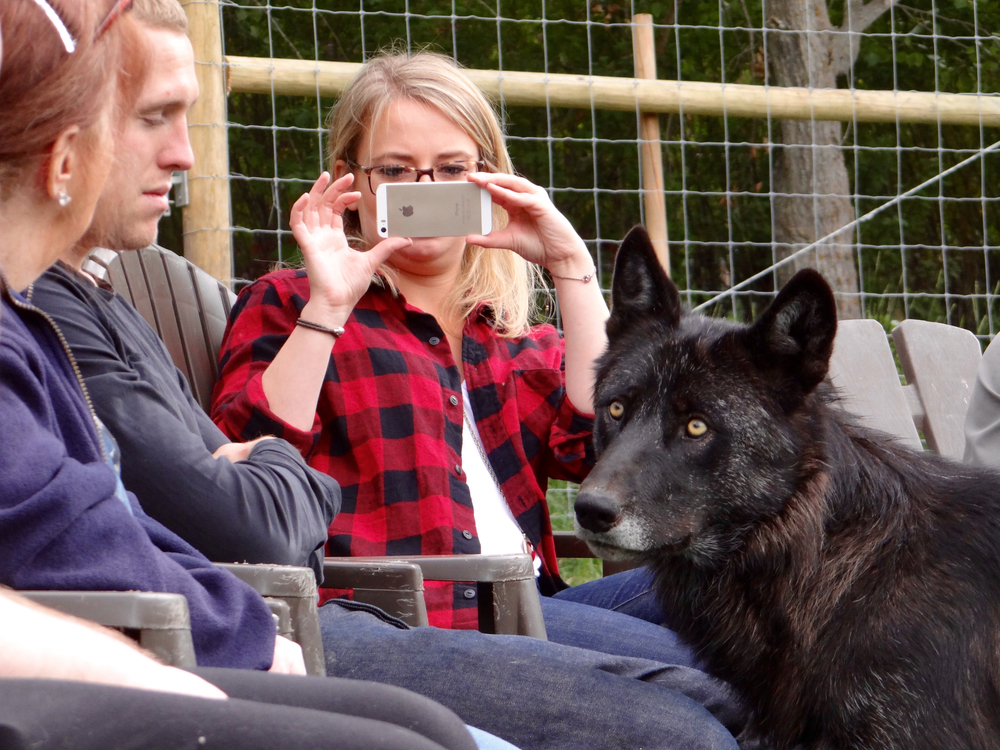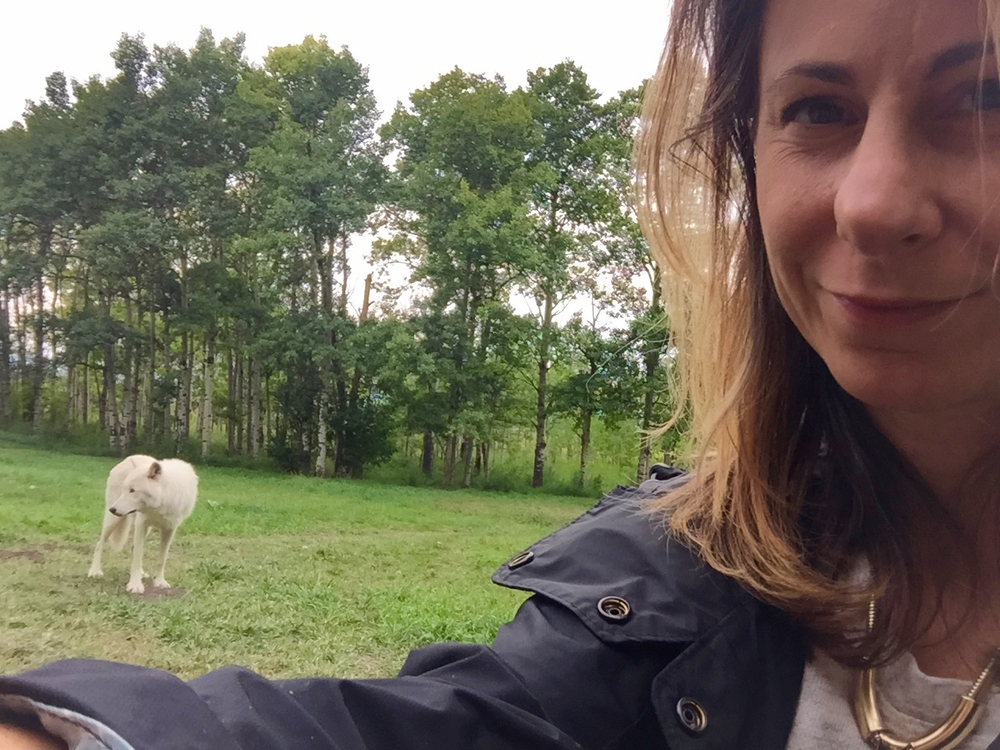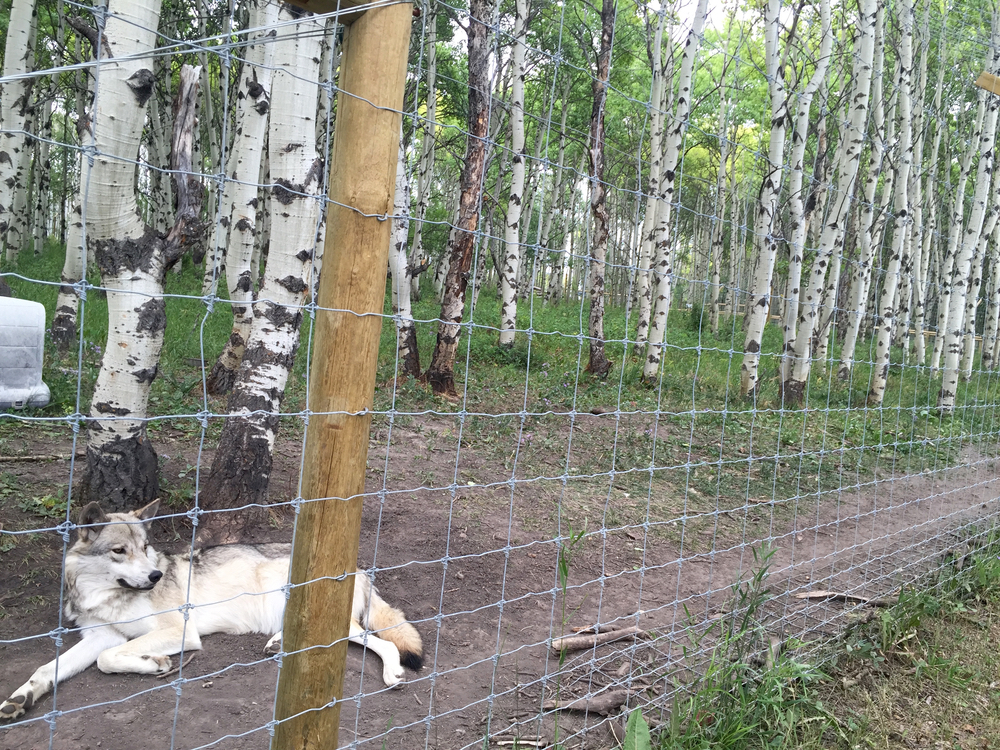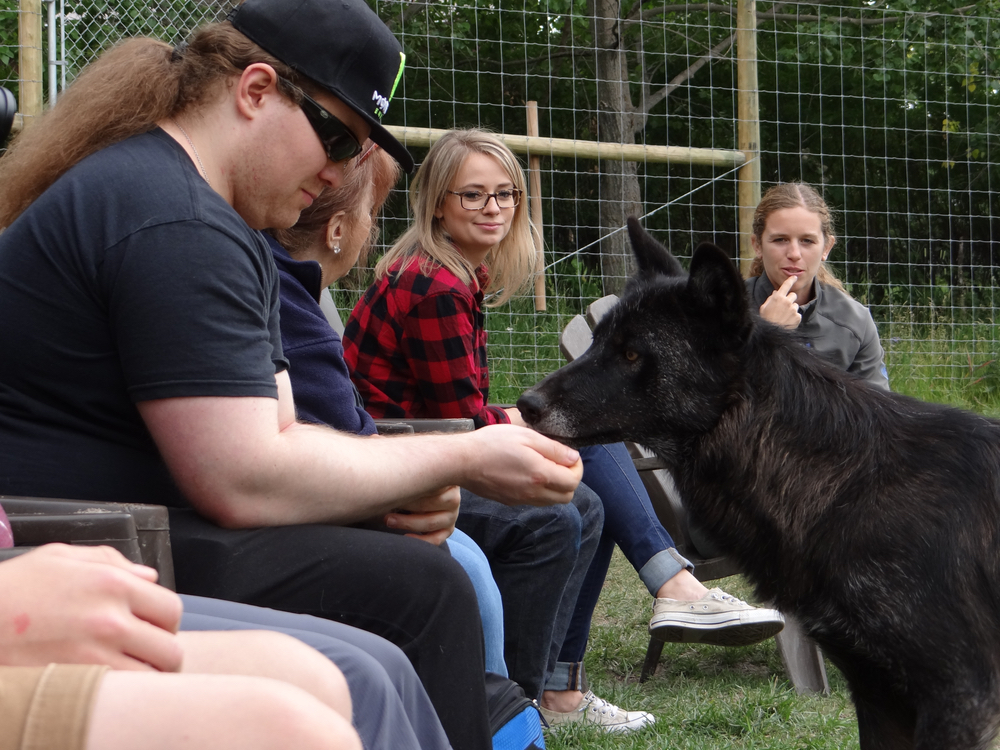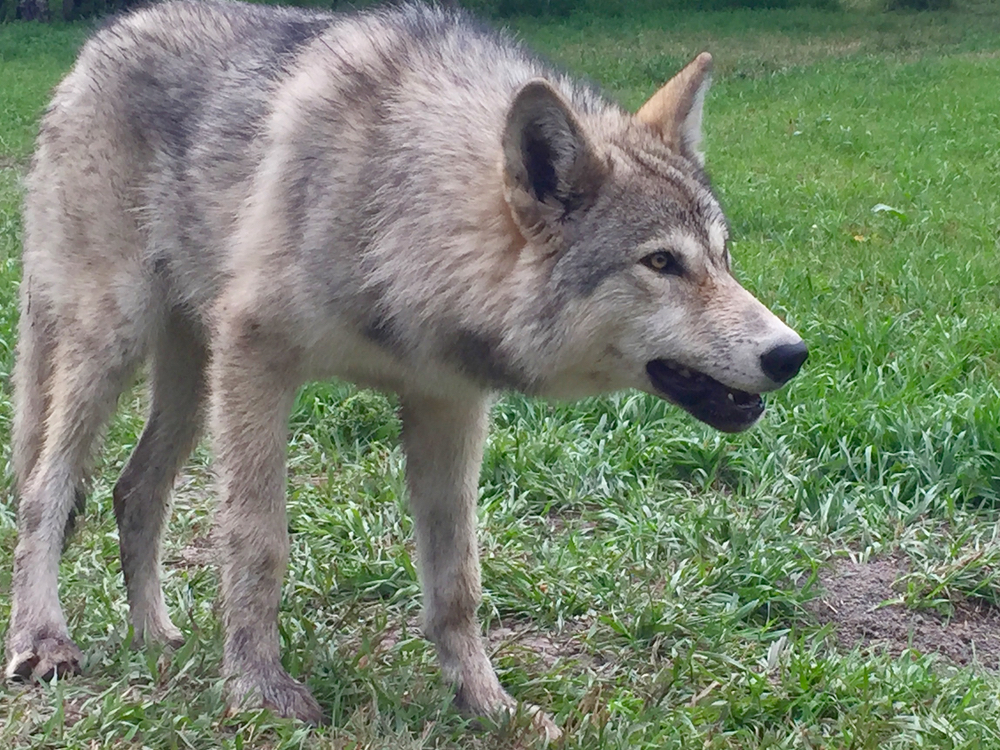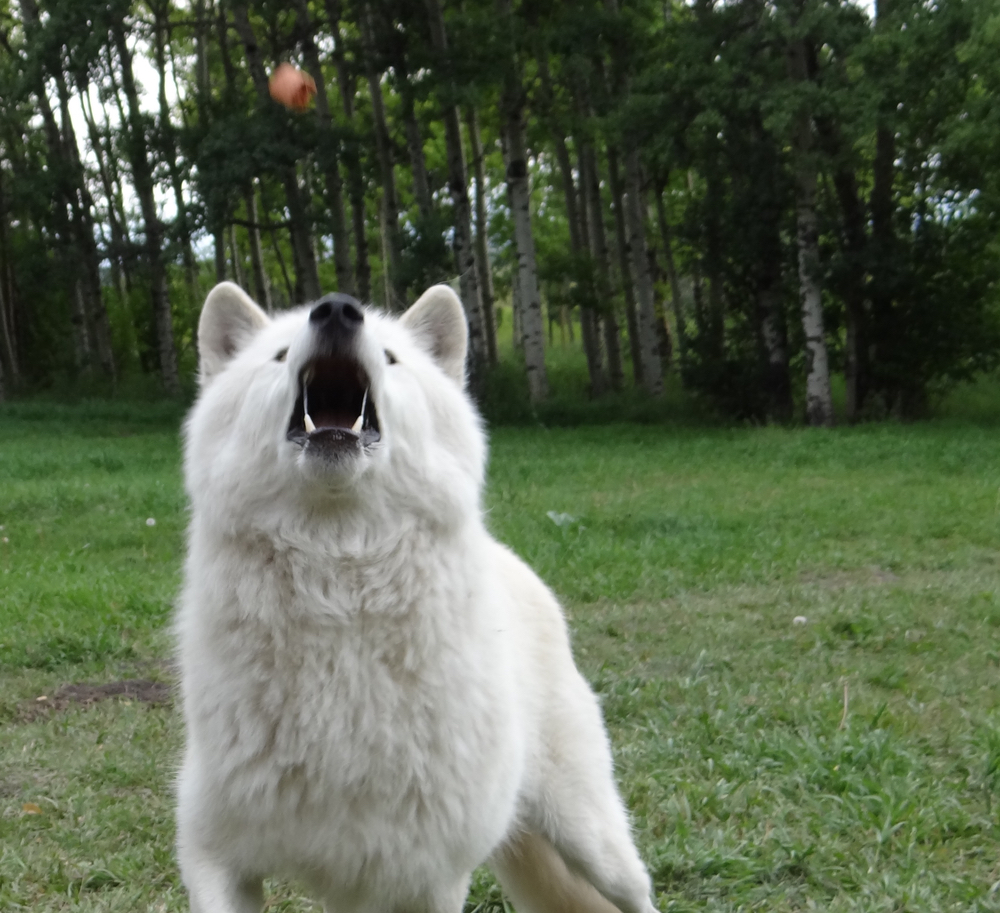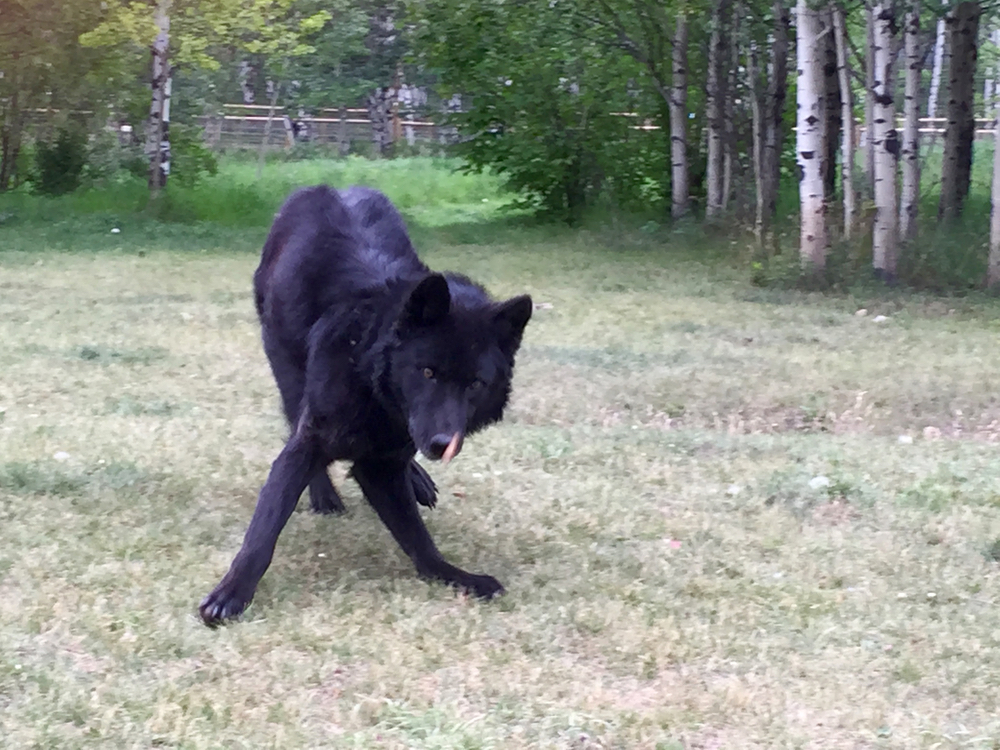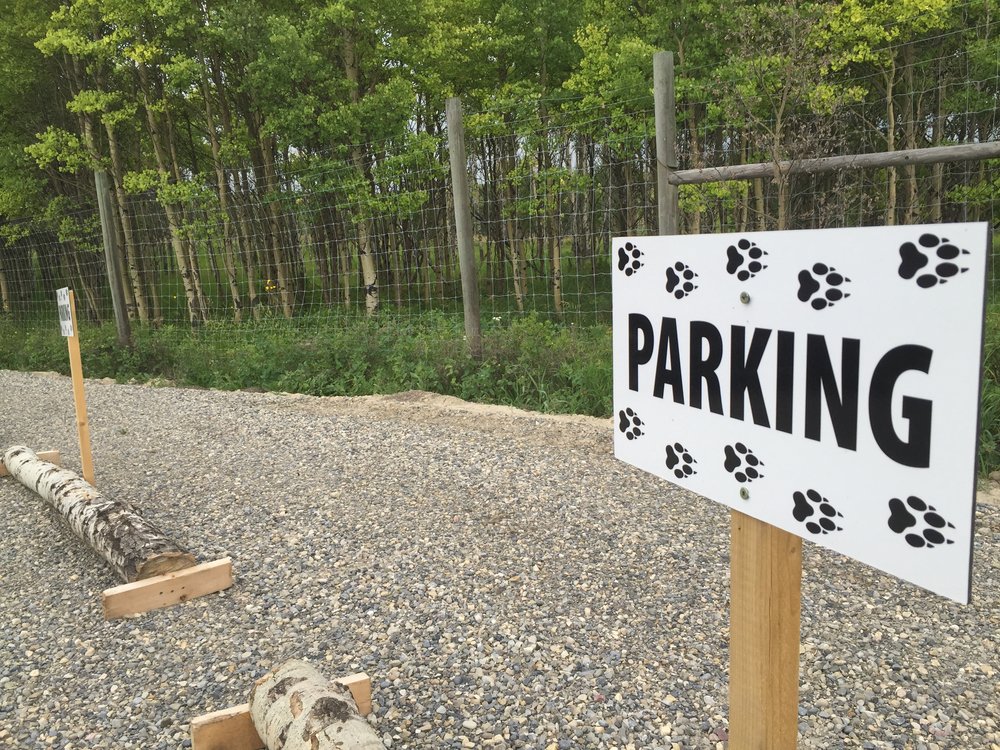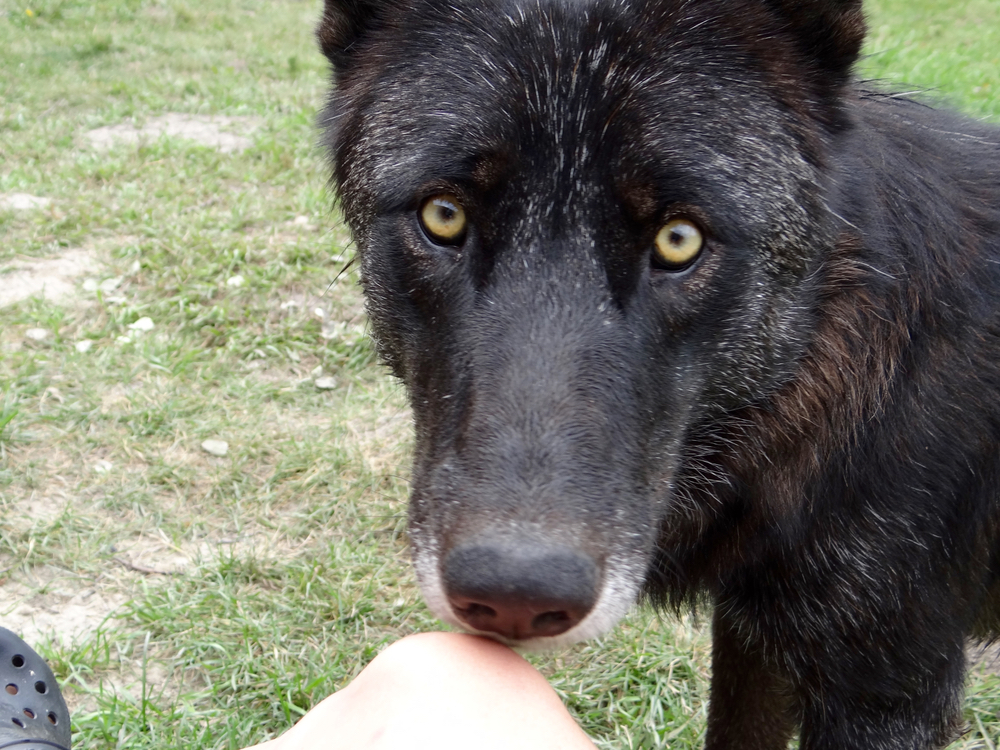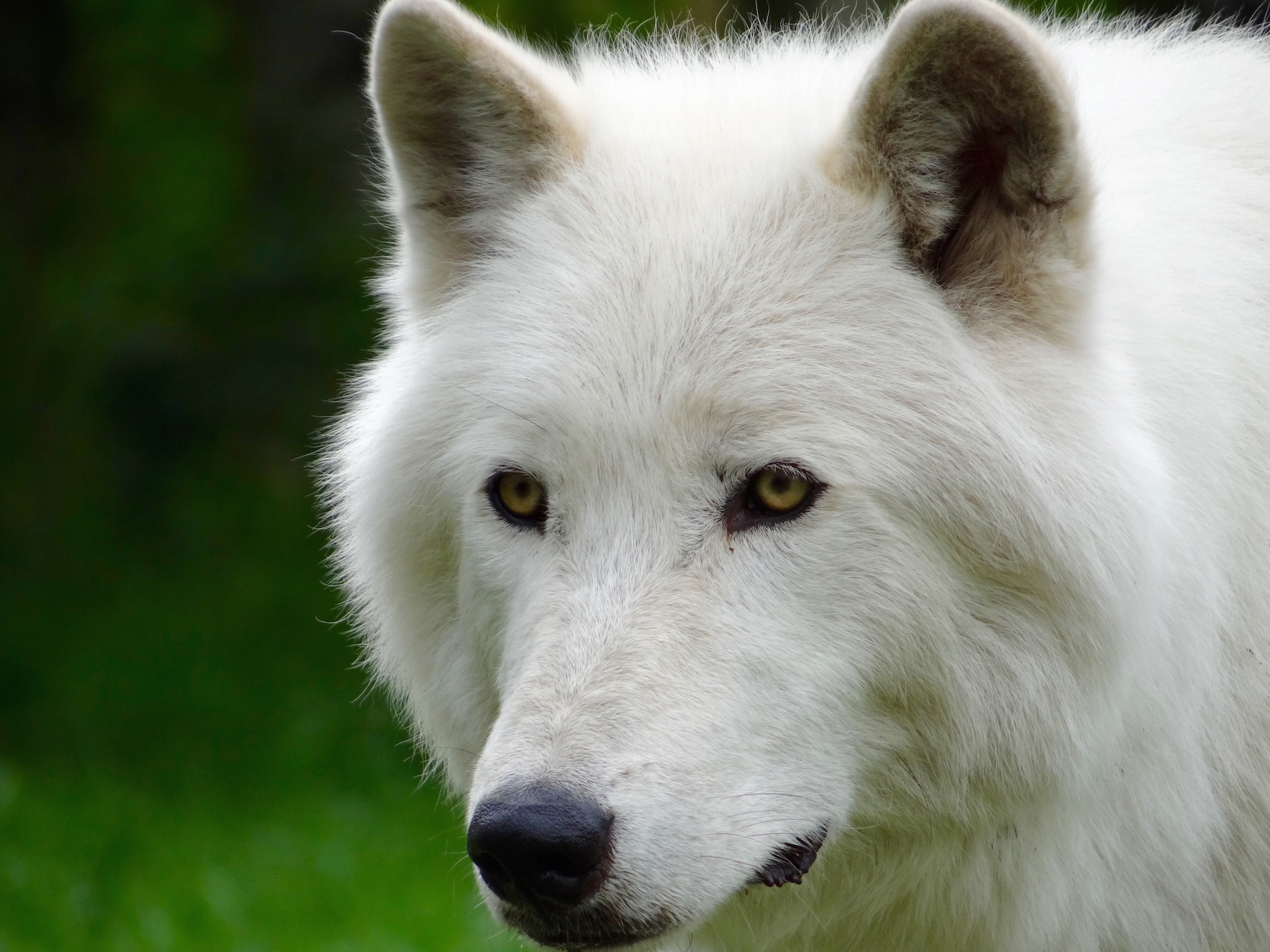
vie-blog-sept2015-kelly-wolfdog-feature
Alberta’s Wolfdog Sanctuary
By Kelly Beasley
Their penetrating eyes studied us nervously as we approached the wolfdogs’ enclosure. As soon as the door was opened, with a gait only a wolf possesses, each of the five skeptical animals trotted away from us.
I was immediately taken by the beauty of one particular wolfdog—Nova. He was bone-white with steely yellow eyes. I found out that Nova is special because he is a cousin of the wolfdog who plays “Ghost” on the popular HBO television series Game of Thrones. Nova is the ambassador of the Yamnuska Wolfdog Sanctuary in Alberta, Canada; his primary role is to help educate the public about wolves and wolfdogs so these wonderful animals will no longer be misunderstood.
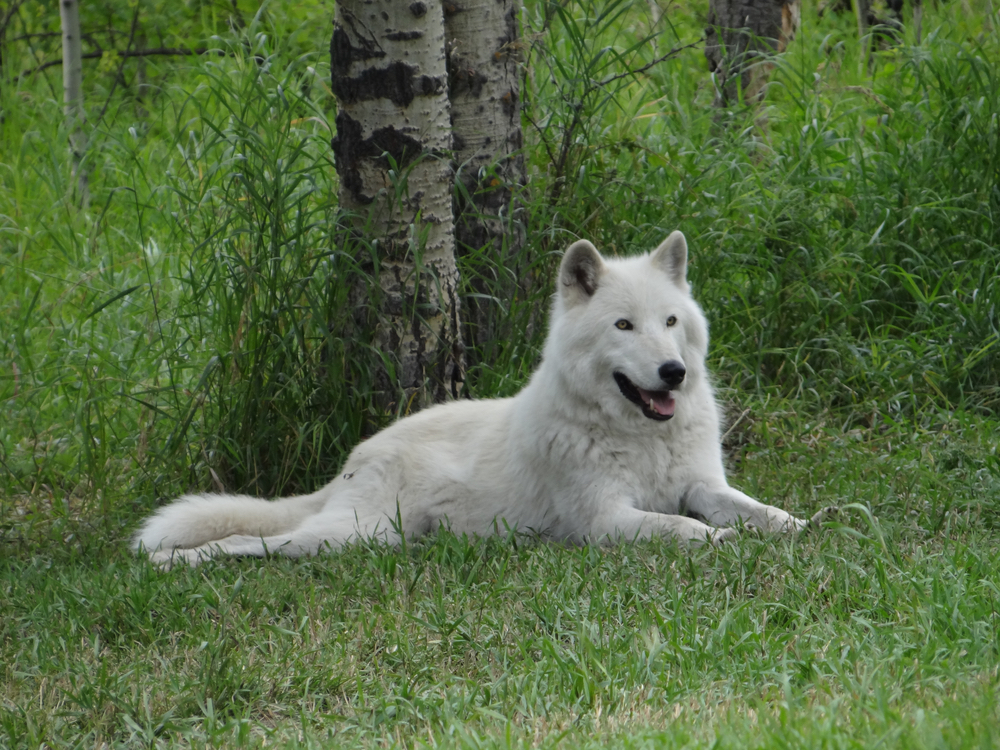
Beautiful Nova
The sanctuary is a haven for rescued wolfdogs who have been given up by their humans for various reasons. Depending on how much wolf an animal has in them, he or she will sometimes behave more like a wolf than a dog, which does not work well with domestication. Unfortunately, for many of these animals who have been relinquished to shelters, euthanasia is the only answer. They are too wild to live among humans, but too domesticated to be freed into the wild.
The differences between wolfdogs and domesticated dogs can present issues in keeping them as pets. A person who gets a wolfdog before understanding its needs may not be able to properly provide the necessary care. Wolfdogs require a lot more exercise and mental stimulation than other dogs.
To help avoid these beautiful animals being euthanized, Yamnuska provides safe shelter, retraining, socializing, and rehoming for surrendered wolfdogs and other dogs who might have been mistaken for them.
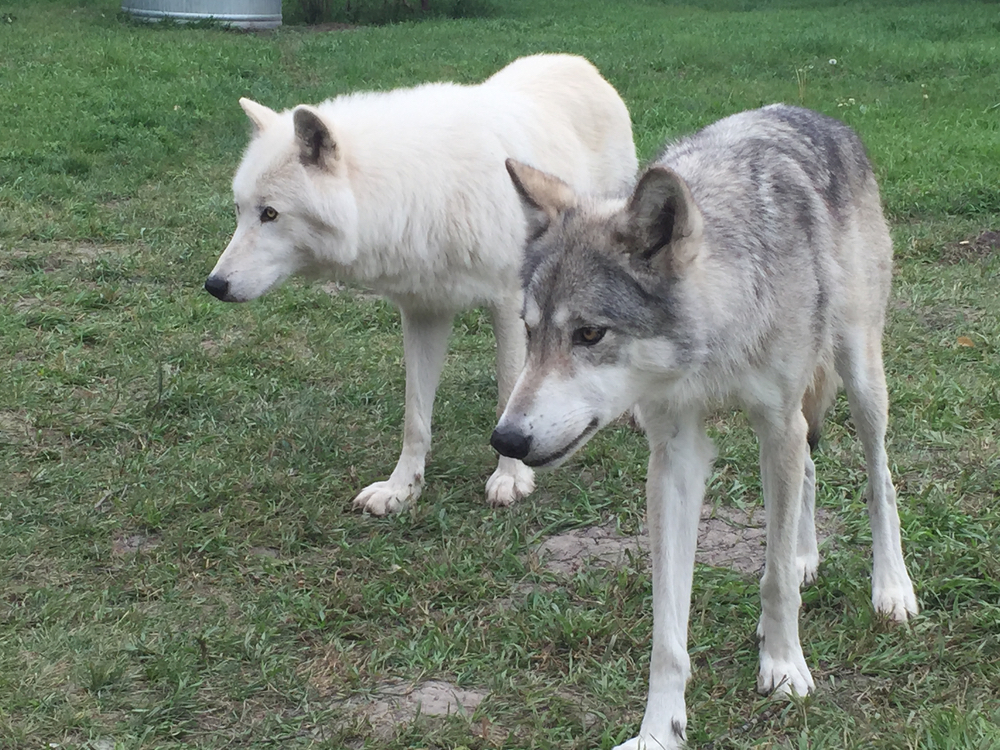
I had the pleasure of exploring this beautiful refuge during my visit to Banff National Park this past August. The amazing volunteers and staff at Yamnuska work hard to help the wolfdogs and to educate the public who come to visit.
Wolfdogs have different genetic levels of wolf in their DNA. It is difficult to know exactly how much wolf DNA any particular wolfdog contains, but humans use a visual method called phenotyping to classify the animals into one of three categories: high-content, mid-content, or low-content wolfdog. A larger head, a longer snout, and the general look of how much the animal resembles a wolf are a few examples that are used to classify them into these categories.
The first enclosure we entered at the sanctuary contained only high-content wolfdogs. Even among high-content animals, they still have various sub-levels of wolf features. Therefore, they each had their own personalities and different levels of wariness. For example, one particular black wolfdog would come right up to us, and he would steal anything he could out of our laps. Nova, on the other hand, was extremely wary. Still, they were both classified as high-content wolfdogs.
After we settled into chairs, the wolfdogs watched from afar as we were instructed on how to behave in front of the leering residents. Unlike dogs, these animals have no intrinsic interest in humans. The one time they were interested in us was when we had treats to give to them. After some instructions on what to do and what not to do, our guide gave us each a handful of treats so that we could have a little interaction with the wolfdogs.
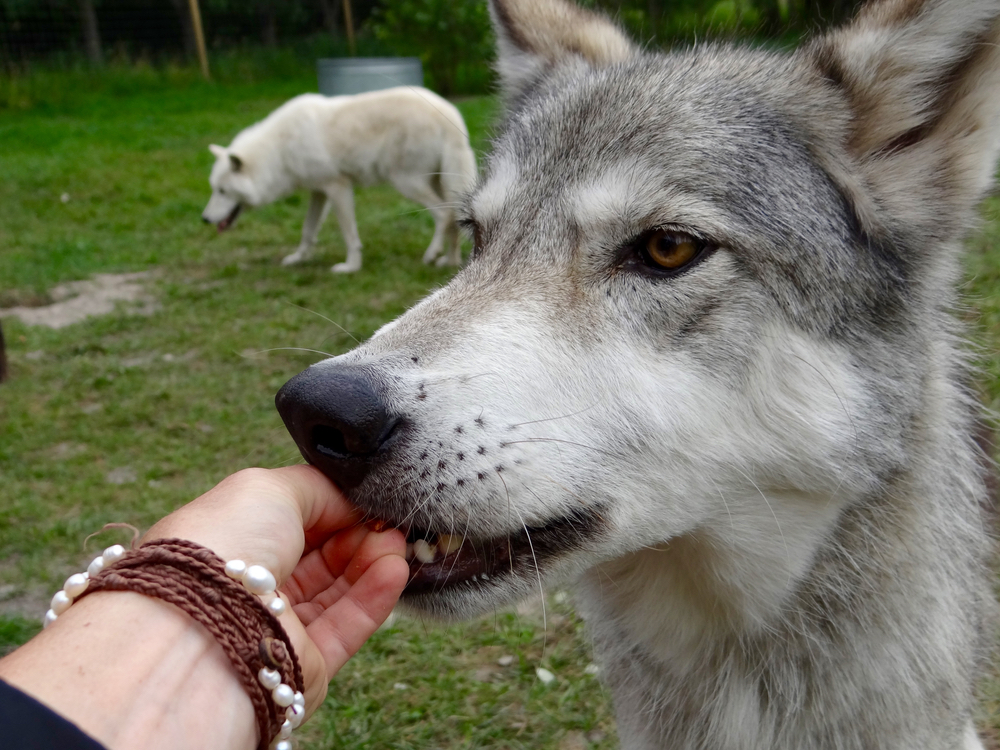
Instantly, we had the animals’ attention, and I immediately started snapping photos as they approached. We had to throw treats out to some of them, such as Nova—who was very good at catching the treats in the air! Others would simply take treats right out of our hands.
Wolves have very strict levels of dominance in their packs. Dogs, in contrast, display situational dominance where they may act dominant in one situation and submissive in another. Wolfdogs will also exhibit variations in their situational pack hierarchy. In wolfdogs, an individual may behave like the alpha toward another individual concerning food possession, but they might be more submissive to the same dog with something else, such as relinquishing a favorite toy.
We witnessed this phenomenon in another enclosure, which held a pair of medium-content wolfdogs. The omega (or lower-ranking) dog of the pair was always last to get to the treats, but later we saw her urinate right over the other dog’s urination spot, which is an alpha behavior. This was due to their stronger dog traits, as this was a medium-content wolfdog pair as opposed to a high-content pair.
It was a blessing to be able to be so close to these beautiful creatures and to learn more about the breed. It’s wonderful to know that the refuge educates people about the sad demise of many wolfdogs, and that it can easily be prevented with a little education and understanding. For anyone interested, you might like to visit to the Yamnuska Wolfdog Sanctuary—especially if you are a Game of Thrones fan!
Share This Story!
CATEGORIES
RECENT POSTS
NEWSLETTER
Sign up to receive exclusive content updates
KEEP UP WITH THE LATEST STORIES FROM VIE



